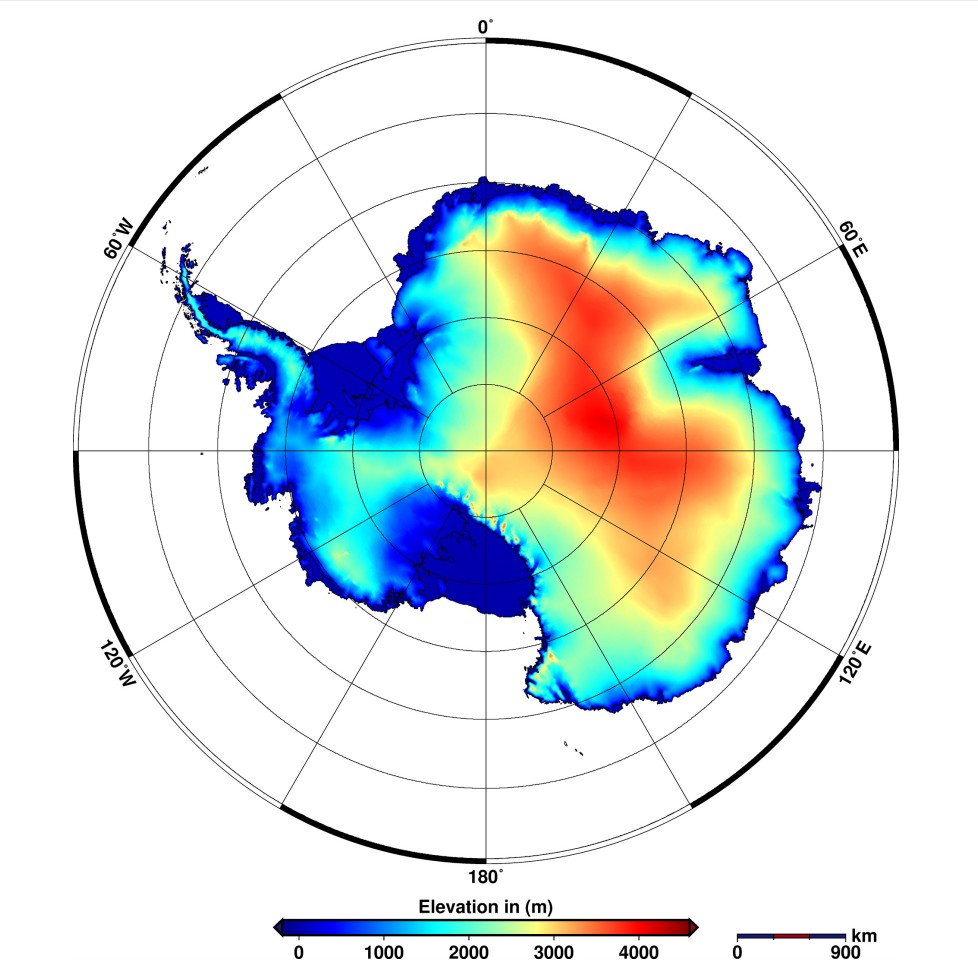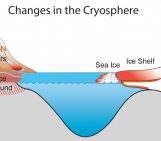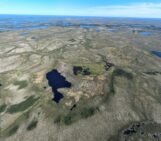
Elevations in Antarctica. The average altitude is about 2,500m. [Credit: subset of Fig 5 from Helm et al (2014)]
When it comes to climate change, the Arctic and the Antarctic are poles apart. At the north of the planet, temperatures are increasing twice as fast as in the rest of the globe, while warming in Antarctica has been milder. A recent study published in Earth System Dynamics shows that the high elevation of Antarctica might help explain why the two poles are warming at different speeds.
The Arctic vs the Antarctic
At and around the North Pole, in the Arctic, the ice is mostly frozen ocean water, also known as sea ice, which is only a few meters thick. In the Antarctic, however, the situation is very different: the ice forms not just over sea, but over a continental land mass with rugged terrain and high mountains. The average height in Antarctica is about 2,500 metres, with some mountains rising as high as 4,900 metres.
A flat Antarctica would warm faster

Mount Jackson in the Antarctic Peninsula reaches an altitude of 3,184 m [Credit: euphro via Flickr]
Marc Salzmann, a scientist working at the University of Leipzig in Germany, decided to use a computer model to find out what would happen if the elevation in Antarctica was more like in the Arctic. He discovered that, if Antarctica were flat, there would be more warm air flowing from the equator to the poles, which would make the Antarctic warm faster.
As Antarctica warms and ice melts, it is actually getting flatter as time goes by, even if very slowly. As such, over the next few centuries or thousands of years, we could expect warming in the region to speed up.
Reference/further reading
 This is modified version of a “planet press” article written by Bárbara Ferreira and originally published on 18 May 2017 on the EGU website
This is modified version of a “planet press” article written by Bárbara Ferreira and originally published on 18 May 2017 on the EGU website
(a Serbian version is also available, why not considering adding a new language to the list? 🙂 )
- Salzmann, M.: The polar amplification asymmetry: Role of antarctic surface height, Earth Syst. Dynam., doi:10.5194/esd-8-323-2017, 2017
- A longer version of this article exists on the EGU website : ‘Press Release: Flat Antarctica – Land height could help explain why Antarctica is warming slower than the Arctic‘.




